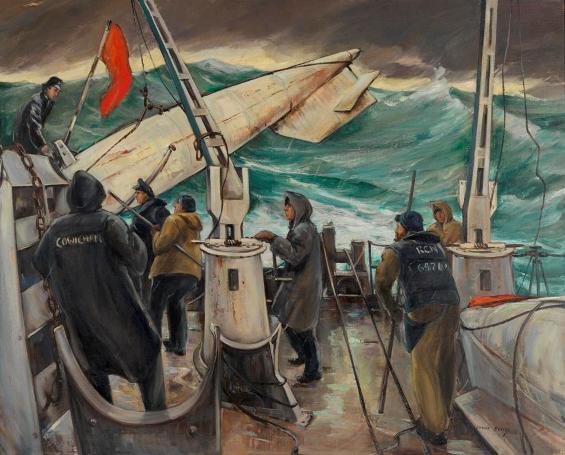Canada's Naval History
www.warmuseum.ca/navalhistoryCanadian War Museum

Second World War (1939-1945)
The Navy in European Waters - D-Day and the Normandy Landings
Over 100 Canadian warships and some 10,000 Canadian sailors supported D-Day, the 6 June 1944 landings in Normandy. Canadian ships and sailors helped protect the invasion fleet, cleared German minefields, and ferried Allied troops across the Channel.

Tangled Float, No.2
Leonard Brooks' painting of a scene aboard HMCS Cowichan, one the Canadian minesweepers present at D-Day, shows some of the hazards of minesweeping.
In rough seas, an Oropesa float (sometimes called a paravane) has become tangled in a cable (left). Some of Cowichan's crew attempt to free the cumbersome float while it hangs from one of the derricks (centre). The louvered object to the left of the empty cradle for the float (far left) is probably an "otter", one of the devices which kept the minesweeping cable at a certain depth and streaming out behind the minesweeper.
Tangled Float, No.2
Painted by Leonard Brooks in 1944
Beaverbrook Collection of War Art
CWM 19710261-1165